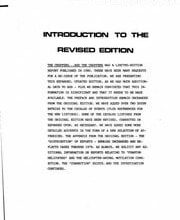Hidden for 91 Years: 1933 Study Reveals Electrical Disturbances Likely Linked to Extraterrestrial Origins
Unearthing Karl Jansky’s Groundbreaking Discovery of Extraterrestrial Radio Waves
In a remarkable turn of historical perspective, the groundbreaking work of engineer Karl Jansky, who first detected structured radio waves from the direction of the Sagittarius constellation in 1933, has resurfaced after 91 years in relative obscurity. Published in the esteemed journal Proceedings of the Institute of Radio Engineers, Jansky’s findings were initially overshadowed by the Great Depression, which severely limited funding for research in the field.
Jansky’s innovative approach involved constructing a directional antenna capable of receiving radio waves at a frequency of 20.5 MHz (with a wavelength of about 14.6 meters). This cutting-edge equipment, which had a diameter of approximately 100 feet and was mounted on a rotating turntable, earned the nickname “Jansky’s merry-go-round.” Jansky utilized this technology to capture signals from various directions, leading to the categorization of three types of static: nearby thunderstorms, distant thunderstorms, and a faint static of unknown origin.
Initially suspecting that this new static could be solar radiation, Jansky discovered that its peak intensity shifted away from the position of the Sun, repeating on a cycle of 23 hours and 56 minutes—a length that perfectly matched a sidereal day. This realization, sparked by discussions with astrophysicist Albert Melvin Skellett, helped Jansky conclude that the mysterious radiation was not only cosmic but also emanating from the Milky Way itself, primarily directed toward Sagittarius.
In April 1933, he presented his findings at a meeting in Washington D.C., to an audience that struggled to grasp the significance of his work. However, the New York Times caught wind of the revelation, publishing an article on May 5, 1933, and Jansky featured in a special NBC program titled "Radio Sounds from Among the Stars."
While his study, titled "Electrical Disturbances Apparently of Extraterrestrial Origin," was published later that year, Jansky faced challenges in continuing his research—both from the astronomical community and his employers at Bell Labs, who found it difficult to justify funding for studies that seemed remote from practical communication technologies. He continued his inquiries into the phenomenon, later referring to the radiation as "Star Noise," but support was minimal.
Jansky’s pioneering discovery initiated the field of radio astronomy, paving the way for future explorations of cosmic radio waves. Sadly, he never received the support he needed to fully pursue his findings, especially during the economic hardships of the Great Depression.
The original 1933 study remains a rare gem, with hard copies fetching upwards of $3,800 when they can be found. Fortunately, an accessible digital archive was made available by Harvard, allowing both enthusiasts and scholars to explore his work in detail.
You can read Jansky’s original paper here and view additional archived pages of his landmark study linked above.
Jansky’s extraordinary contributions to astronomy may have been underestimated during his time, but today, his legacy continues to influence our understanding of the universe and the intricate world of radio wave astronomy. The question lingers: what other mysteries of the cosmos might we uncover in the repositories of historical research?




